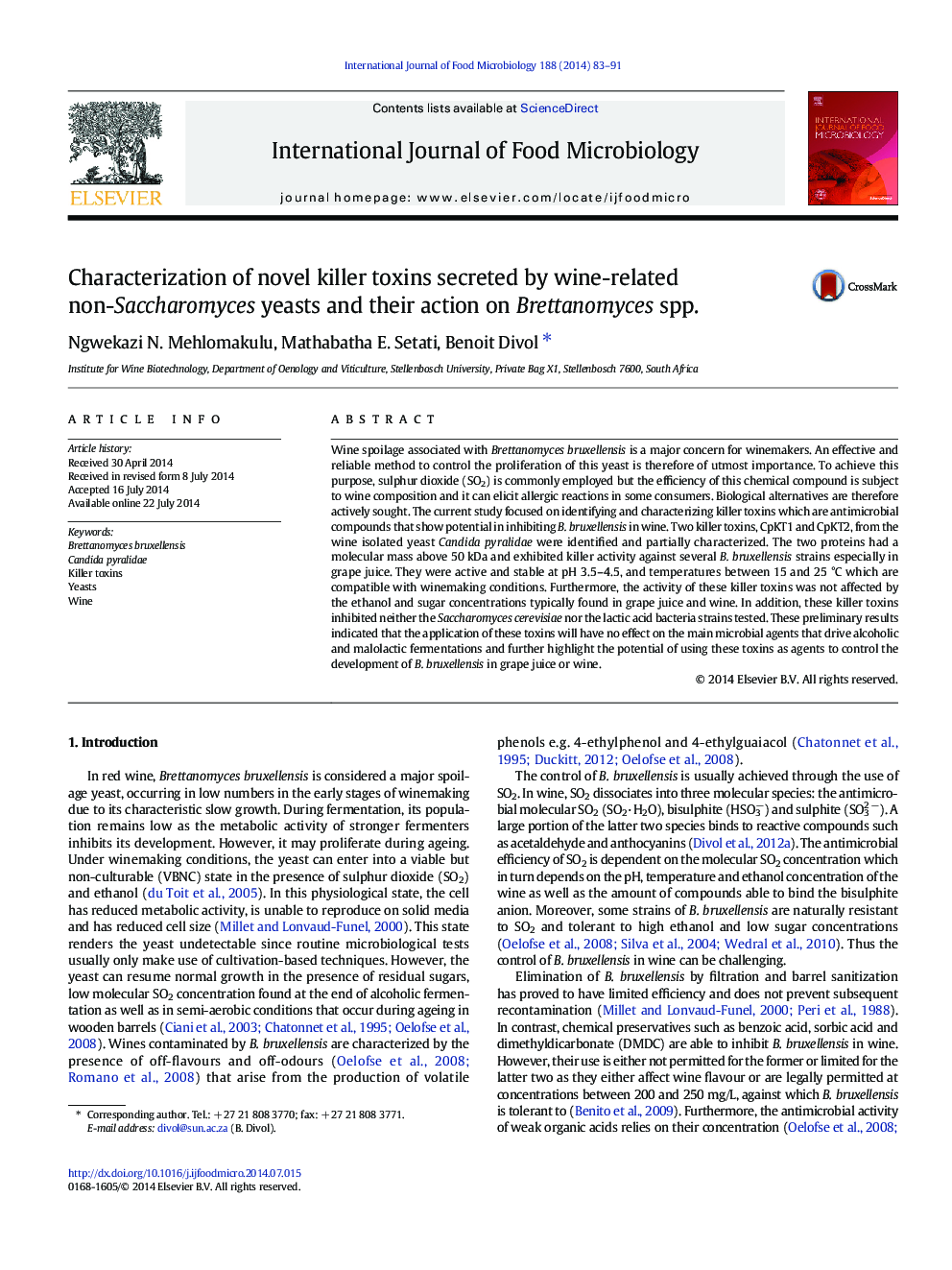| کد مقاله | کد نشریه | سال انتشار | مقاله انگلیسی | نسخه تمام متن |
|---|---|---|---|---|
| 4366825 | 1616595 | 2014 | 9 صفحه PDF | دانلود رایگان |

• Identification of two novel killer toxins secreted by Candida pyralidae strains
• Proof of killer toxin stability under winemaking conditions
• Confirmation of Brettanomyces bruxellensis inhibition by these killer toxins
Wine spoilage associated with Brettanomyces bruxellensis is a major concern for winemakers. An effective and reliable method to control the proliferation of this yeast is therefore of utmost importance. To achieve this purpose, sulphur dioxide (SO2) is commonly employed but the efficiency of this chemical compound is subject to wine composition and it can elicit allergic reactions in some consumers. Biological alternatives are therefore actively sought. The current study focused on identifying and characterizing killer toxins which are antimicrobial compounds that show potential in inhibiting B. bruxellensis in wine. Two killer toxins, CpKT1 and CpKT2, from the wine isolated yeast Candida pyralidae were identified and partially characterized. The two proteins had a molecular mass above 50 kDa and exhibited killer activity against several B. bruxellensis strains especially in grape juice. They were active and stable at pH 3.5–4.5, and temperatures between 15 and 25 °C which are compatible with winemaking conditions. Furthermore, the activity of these killer toxins was not affected by the ethanol and sugar concentrations typically found in grape juice and wine. In addition, these killer toxins inhibited neither the Saccharomyces cerevisiae nor the lactic acid bacteria strains tested. These preliminary results indicated that the application of these toxins will have no effect on the main microbial agents that drive alcoholic and malolactic fermentations and further highlight the potential of using these toxins as agents to control the development of B. bruxellensis in grape juice or wine.
Journal: International Journal of Food Microbiology - Volume 188, 1 October 2014, Pages 83–91